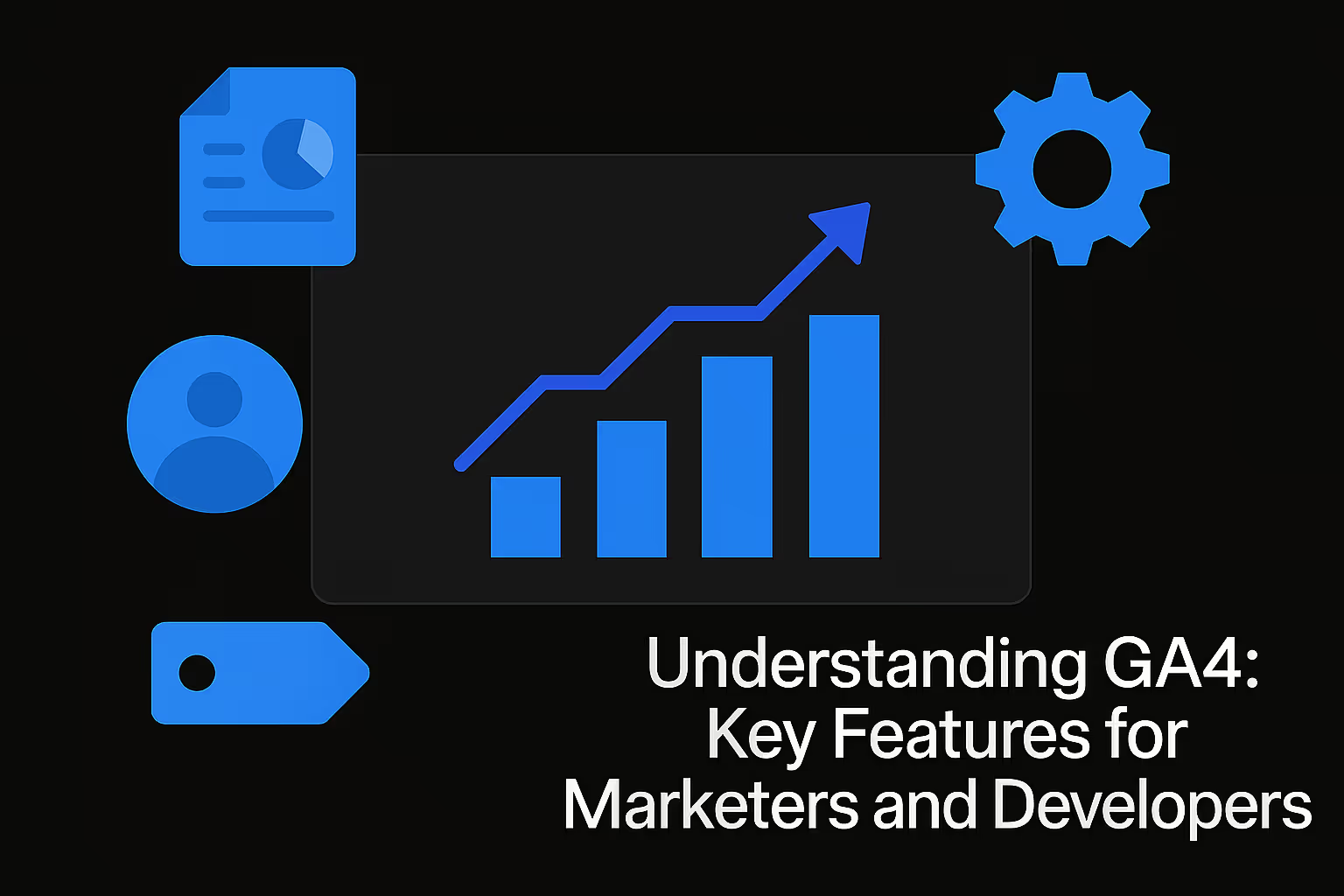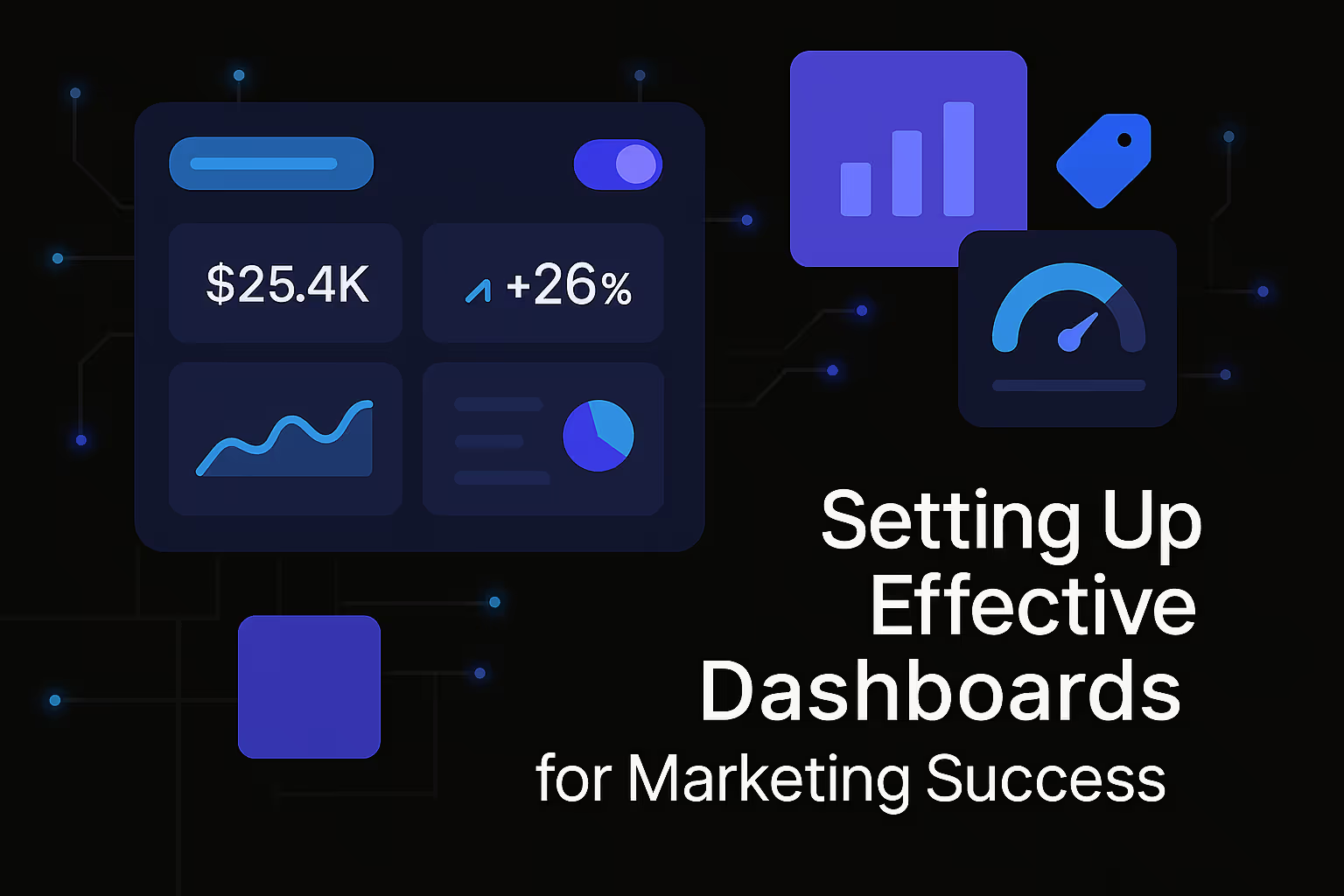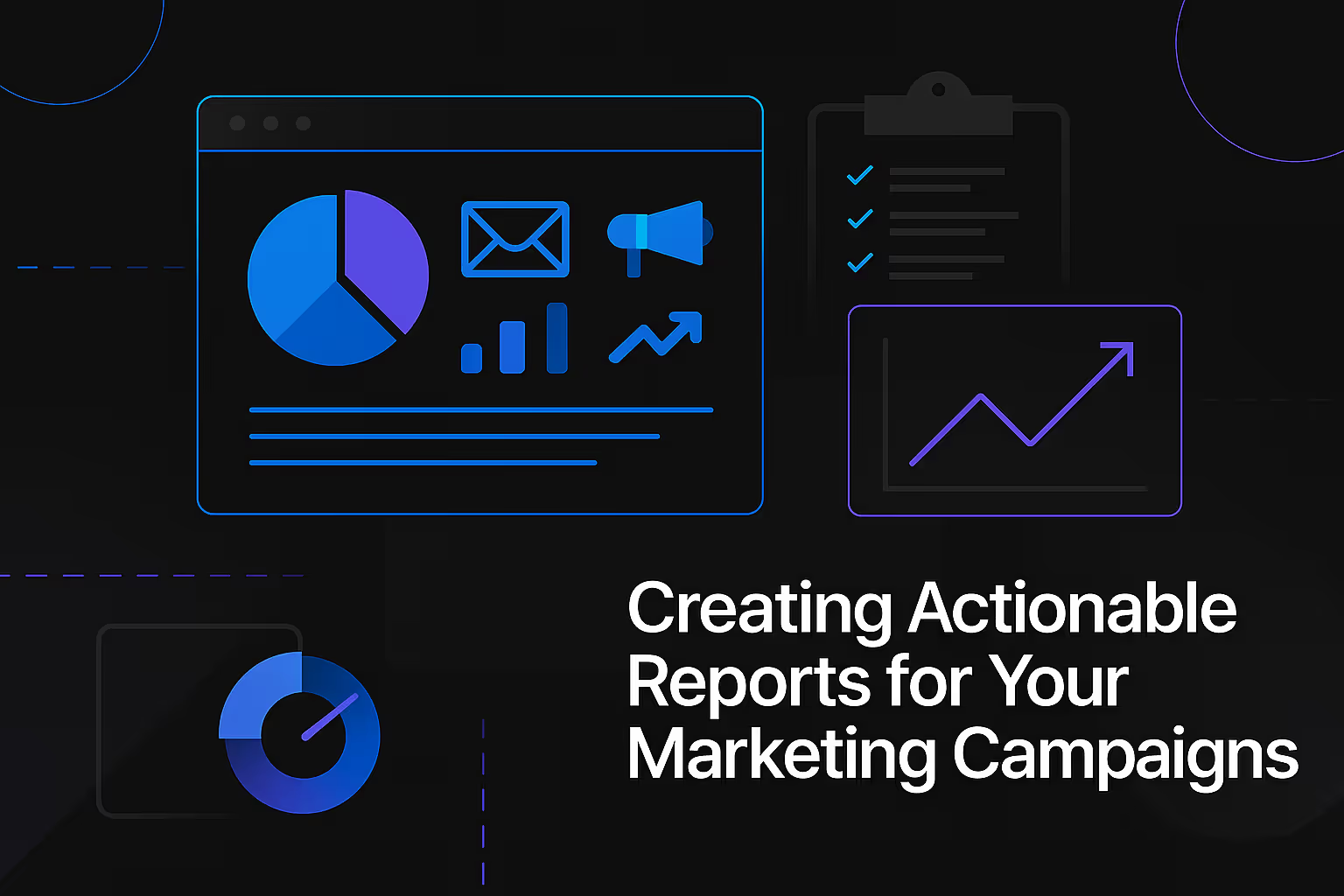Understanding GA4: Key Features for Marketers and Developers

The digital landscape is in constant flux, and with it, the tools we rely on to understand user behavior and measure performance. For years, Universal Analytics (UA) served as the cornerstone of web analytics. However, a significant shift has occurred, bringing forth Google Analytics 4 (GA4). This new iteration represents more than just an update; it's a fundamental reimagining of how data is collected, processed, and reported. The transition to GA4 is not merely an option but a necessity, especially with Universal Analytics having ceased processing new data. Understanding why GA4 matters now is crucial for anyone involved in digital marketing or development.
At its core, GA4 introduces an event-driven data model, a significant departure from UA's session-based approach. This paradigm shift offers unparalleled flexibility, allowing for the tracking of virtually any user interaction on websites and mobile applications. It’s designed to provide a more holistic and user-centric view of the customer journey, moving beyond fragmented sessions to understand continuous user engagement across various touchpoints. Furthermore, GA4 is built with the future in mind, addressing growing concerns around user privacy and the impending cookieless environment. Its enhanced privacy controls and machine learning capabilities position it as a robust, future-proof analytics solution designed to adapt to evolving digital landscapes. This allows businesses to gain deeper insights while respecting user privacy.
The core differences and advantages of GA4 over its predecessor are profound. Firstly, GA4 focuses on user-centric measurement across all platforms. This means a single property can collect data from both websites and mobile apps, providing a unified view of how users interact with your brand, regardless of the device or platform they use. This cross-platform tracking capability is invaluable for businesses operating across multiple digital touchpoints. Secondly, GA4 offers enhanced privacy controls, providing more granular options for data collection consent and data retention. It also prioritizes first-party data, preparing businesses for a future where third-party cookies may be obsolete. Finally, the integration of predictive capabilities powered by machine learning sets GA4 apart. These features can forecast user behavior, such as purchase probability or churn risk, enabling marketers to make proactive, data-driven decisions. This proactive insight is a significant leap forward from simply reporting past actions.
GA4 for Marketers: Unlocking Deeper Customer Insights
For marketers, GA4 is more than just an analytics tool; it's a powerful engine for understanding customer behavior at a granular level and informing strategic decisions. The event-driven data model is a marketer's goldmine, offering unprecedented flexibility. Instead of rigid session-based metrics, GA4 allows for the tracking of any user interaction as an event. This includes everything from page views and clicks to video plays and custom interactions specific to your business goals. Marketers can now understand not just that a user visited a page, but precisely what they did on that page, the sequence of their actions, and how those actions contribute to conversions. This granular data, encompassing events, parameters, and user properties, allows for a comprehensive understanding of user journeys, moving beyond simply counting sessions to analyzing the entirety of a user's engagement.
With GA4, marketers gain access to enhanced user engagement metrics that provide a more meaningful look at user behavior than traditional metrics like bounce rate. Metrics such as Engagement Rate, Engaged Sessions, and Average Engagement Time offer a clearer picture of how actively users interact with your content. A high engagement rate, for instance, indicates that users are finding value in your content and spending meaningful time interacting with it, which is a far more insightful metric than a low bounce rate. These metrics help marketers identify high-value interactions and optimize content and user experiences accordingly.
One of the most significant benefits for marketers is GA4’s cross-platform tracking and unified customer view. In today's multi-device world, users seamlessly transition between websites, mobile apps, and other digital properties. GA4 enables marketers to track these journeys seamlessly, stitching together data from various sources to build a holistic understanding of the customer. This unified view is critical for accurate attribution modeling, allowing marketers to understand which touchpoints truly influence conversions and to optimize their campaigns for maximum impact across the entire customer journey. This capability helps in understanding the complex path to conversion.
GA4 also offers powerful audience segmentation and activation capabilities. Marketers can create highly specific audiences based on detailed behavioral patterns, demographic data, and even predictive metrics. For example, you can segment users who have viewed a product but not purchased, or users who are likely to churn. These precisely defined audiences can then be exported to other Google platforms, such as Google Ads, for personalized marketing campaigns and remarketing efforts, significantly improving targeting and return on ad spend. Leveraging predictive audiences takes this a step further, allowing marketers to target users who are predicted to perform future actions, such as making a purchase, before they even do so.
The integration of data-driven decisions with machine learning empowers marketers with proactive insights. GA4’s machine learning capabilities can automatically detect anomalies in your data, alerting you to sudden changes in performance that might indicate issues or opportunities. More impressively, it offers predictive metrics like purchase probability and churn probability, which leverage historical data to forecast future user behavior. These forward-looking insights allow marketers to proactively adjust their strategies, intervene with at-risk users, or capitalize on high-potential segments, thereby optimizing their marketing efforts before events even unfold.
Finally, GA4 provides simplified reporting and explorations to help marketers extract actionable insights from their data. While standard reports offer a streamlined view of key performance indicators, the true power lies in the Explorations feature. This robust suite of tools allows marketers to perform custom, in-depth analyses without needing to export data or rely on complex queries. Whether it's a Funnel Exploration to understand conversion paths, a Path Exploration to visualize user journeys, or a Free-Form Exploration to slice and dice data in any way imaginable, Explorations empower marketers to uncover hidden trends, identify bottlenecks, and visualize data to support strategic decision-making. This flexibility in reporting allows for deep dives into specific areas of interest, helping to refine marketing strategies.
GA4 for Developers: Implementation, Integration, and Advanced Customization
For developers, GA4 represents a shift towards more flexible and robust data collection, offering powerful tools for implementation, integration, and advanced customization. Understanding these technical aspects is paramount for ensuring data accuracy and maximizing the potential of GA4. The foundation of GA4 begins with the concept of a data stream and the Google Tag. Data streams are the sources of data for your GA4 property, whether it's a website (web stream) or a mobile application (app stream). The new Google Tag (gtag.js) simplifies the implementation process, serving as a unified tagging framework for Google’s measurement products. Developers are responsible for configuring the data layer, a JavaScript object that temporarily holds data for Google Tag Manager or other Google products. A well-structured data layer is crucial for collecting rich, accurate data, enabling precise tracking of user interactions and custom dimensions and metrics. This foundational setup ensures that all necessary data points are captured effectively.
The heart of GA4’s flexibility for developers lies in event measurement and custom events. In GA4, every user interaction is an event, from automatic events like first visits and page views to recommended events and custom events. Developers play a critical role in designing and implementing these events, ensuring they are strategically named and accurately parameterized to capture meaningful data. The importance of strategic event naming and parameterization cannot be overstated; well-defined events lead to cleaner data and more actionable insights. Implementing custom events for specific business needs, such as tracking unique form submissions or custom button clicks, allows for highly tailored analytics. Leveraging Google Tag Manager (GTM) is often the preferred method for flexible and efficient deployment of GA4 tags, providing a robust interface for managing events, triggers, and variables without directly modifying website code. This enables agile adjustments to tracking configurations.
For organizations with advanced data privacy and control requirements, server-side tagging and data privacy in GA4 offer significant advantages. Server-side GTM allows developers to move measurement tag processing from the client’s browser to a server-side container. This offers several benefits, including enhanced data privacy by allowing greater control over what data is sent to vendors and the ability to redact sensitive information before it leaves your server. It also improves website performance by reducing client-side processing, and helps in mitigating client-side tracking limitations often imposed by ad blockers and browser privacy features. Developers are key in setting up and maintaining this server-side infrastructure, ensuring data integrity and compliance.
One of the most powerful features for developers and data analysts is the leveraging of the BigQuery Export. GA4 provides a direct integration with Google BigQuery, allowing for the export of raw, unsampled event-level data directly into a data warehouse. This capability is transformative, enabling advanced analytics beyond what is available in the GA4 interface. Developers can use this raw, unsampled data for advanced analysis, integrating GA4 data with other internal or external data sources for a comprehensive view of business performance. This facilitates the building of custom data warehouses and dashboards using tools like Looker Studio or other business intelligence platforms, providing unparalleled flexibility in data exploration and reporting. This capability is particularly valuable for data scientists and engineers.
GA4 also provides a suite of GA4 APIs, unleashing programmatic access to your analytics data. The Google Analytics Data API allows developers to programmatically access reporting data, enabling the creation of custom dashboards, automated reports, and integration with other internal systems. This means businesses are not limited to the standard GA4 interface for retrieving insights. Furthermore, the Admin API provides functionalities for managing GA4 property settings, user permissions, and creating custom dimensions and metrics programmatically. These APIs facilitate custom integrations and automated workflows, allowing developers to build solutions that perfectly align with their organization's specific data needs and operational processes, streamlining data management and reporting.
Finally, ensuring data accuracy is paramount, and GA4 provides robust tools for debugging and validation. Developers can utilize DebugView within the GA4 interface to see events as they are triggered in real-time, providing an invaluable tool for validating event implementation during development. The Tag Assistant is another essential tool, a Chrome extension that helps developers verify that Google tags are correctly implemented on a website. These tools are crucial for ensuring data integrity from implementation to reporting, allowing developers to identify and rectify any tracking issues before they impact data quality. Thorough debugging and validation are critical steps in any GA4 deployment, ensuring that the insights derived are reliable and actionable.
Best Practices for Maximizing Your GA4 Investment
Adopting GA4 effectively requires more than just technical implementation; it demands a strategic approach that integrates analytics into every aspect of your digital operations. Strategic planning and measurement objectives form the bedrock of a successful GA4 investment. Before diving into implementation, it is crucial to define clear Key Performance Indicators (KPIs) and conversion events that directly align with your business goals. Understanding what success looks like for your organization will guide your GA4 setup, ensuring that you are collecting the most relevant data. This alignment of your GA4 implementation with broader business objectives ensures that the insights gained are directly actionable and contribute to meaningful growth. An iterative approach to data collection and analysis is also recommended, allowing for continuous refinement based on evolving business needs and discovered insights.
Beyond technical setup, training and adoption across teams are vital for maximizing your GA4 investment. It's not enough for developers to implement GA4; marketers and other stakeholders need to understand how to leverage the data for their respective roles. Empowering marketers with data literacy means providing them with the knowledge and skills to navigate the GA4 interface, interpret reports, build custom audiences, and utilize exploration tools effectively. Similarly, providing developers with comprehensive technical documentation and support ensures they have the resources needed for accurate implementation and troubleshooting. Fostering a data-driven culture within the organization, where decisions are consistently informed by analytics, is the ultimate goal. This involves regular communication, training sessions, and demonstrating the value of GA4 data in achieving business outcomes.
Finally, continuous optimization and evolution are essential in the dynamic world of digital analytics. GA4 is not a set-it-and-forget-it solution; it requires ongoing attention to ensure its continued effectiveness. Regularly reviewing data and making adjustments to your tracking setup or reporting configurations will ensure that GA4 remains aligned with your business needs and the evolving digital landscape. Staying updated with new GA4 features and capabilities is also crucial, as Google continues to enhance the platform with new functionalities and integrations. Adapting to changes in the privacy landscape, such as new regulations or browser updates, will also be an ongoing process, requiring adjustments to data collection practices to maintain compliance and data quality. This iterative process of review, adaptation, and optimization will ensure that your GA4 investment continues to yield valuable insights over the long term.
Conclusion: The Future of Analytics is Here
The transition to Google Analytics 4 marks a pivotal moment in the evolution of digital analytics. It represents a proactive response to the complexities of modern user behavior, the imperative of data privacy, and the growing demand for more intelligent, predictive insights. Embracing the event-driven future with GA4 is not just about adopting a new tool; it's about embracing a new philosophy of understanding user interactions. GA4 stands as a powerful tool for truly understanding user behavior across every touchpoint, providing the granular data necessary for informed decision-making.
For marketers, GA4 offers an unprecedented ability to analyze comprehensive user journeys, create hyper-segmented audiences, and leverage machine learning for predictive insights, ultimately driving more effective campaigns and better return on investment. For developers, GA4 provides a flexible and robust framework for data collection, offering advanced customization options, seamless integration with other Google services like BigQuery, and powerful APIs for programmatic access. It bridges the gap between marketing insights and technical implementation, ensuring that the data collected is both accurate and actionable.
Ultimately, mastering GA4 is not just about navigating a new interface; it's about building a strategic asset for long-term digital growth. By understanding its core features, implementing it effectively, and continuously optimizing its use, businesses can unlock deeper customer insights, enhance their digital strategies, and stay ahead in an increasingly competitive digital world. The future of analytics is here, and it’s powered by GA4, offering a more intelligent, user-centric, and privacy-conscious approach to understanding the digital landscape.
Similar Insights
Stay Updated with Our Insights
Join our newsletter for the latest trends and tips in web development and digital marketing.




